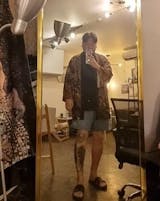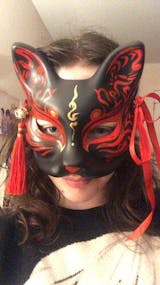I am not the type of person to write reviews but here it goes.
I really needed the clothes for an unexpected party but I chose the fast delivery option and I should say I’m impressed by their fast delivery. The product matches the pictures displayed and I’m impressed by the quality. Kudos to Eiyo Kimono.
How Do You Wear a Japanese Kimono?

The kimono is a floor-length garment that is integral to Japan's history and modern culture. The dress is usually crafted with luxurious fabrics such as silk, satin, and linen. It may be enhanced with ornaments and embroidery along the hems of the robe. On special occasions, women wear several accessories on top of the kimono and decorate their hair with unique hair combs. As the kimono consists of several garment pieces, a skirt, a belt, and several layers underneath, it can be quite time-consuming to wear it. For beginners, the idea of wearing a kimono may be a hassle.
The Procedure of Setting Up a Kimono
Designing a formal kimono with the colours and fabrics of your choice can be costly. Most practitioners in Japan who are skilled at cutting, dyeing, and designing kimonos follow the ancient practices that were prevalent during the garment's initial stage. This practice honours the country's history and also keeps the original kimono design in circulation. However, it also means that an ordinary kimono would have a heavy price tag. Kimonos are also difficult to clean because of the delicate yet expensive fabric. In addition to this, the embroidery is usually done with silk thread that tends to fall apart when handled roughly.
The price of a kimono is also on the higher side because of the amount of fabric used. Although we call the full set a kimono, it consists of several components essential to bringing the effect of the garment to the front. Not many visitors or citizens are familiar with each part of the kimono, but it remains the most exquisite cultural dress today. The individual pieces of a kimono make them complex, and those wearing it for the first time may need a professional to help them.
To avoid washing the kimono because of the costly process, most people wear a robe called a Nagajuban underneath their kimonos. The Nagajuban is not made of costly fabric, and it is completely washable. Only the collar of this robe shows once you put on your entire kimono. In some Nagajubans, the collar is also replaceable so that you can interchange the colours. The Nagajuban is a staple in the kimono dress-up, and it is considered informal or unwise to wear a kimono robe without a Nagajuban underneath. This inner robe is tied with a decorative sash as it is hidden from the world.
The Sleeves and the Belt of a Kimono
The sleeves on a kimono usually end at the wrist, and they are loose-fitting. In earlier times, the kimono was just a garment stitched together from two pieces of cloth. There was no indication of sleeves, belts, or skirts. However, as the dress grew more sophisticated, it developed distinct parts. The sleeves of a kimono are of the same colour or pattern as the rest of the garment, and the length can sometimes vary depending on the age of the wearer. The kimono has medium-length sleeves for younger people, so it does not hinder movement and cause discomfort. The sleeves of a kimono extend its grace and give the garment a feminine look.
The Nagajuban is the first thing to put on when wearing a kimono. You should follow this with the kimono, which is the main piece of clothing and is usually made of silk or similar decorative cloth. Position the kimono accurately. At this point, you may need someone to point out if it is in the correct place. The right side of the kimono should overlap the left side without any flaps. The hem of your kimono should stop at your ankle. If it extends below or hitches up, you need to re-adjust it. A kimono usually has excess fabric, but this will not be a problem if it is wrapped correctly on both sides.
The Obi is the belt or sash that goes around your waist once you have successfully put on your kimono. Like the kimono, an obi is usually silk and may consist of patterns or embroidery. It should be noted that most contemporary kimonos only feature the Obi as a decorative element, and the real securing is done underneath the kimono with the help of other sashes. The Obi is the most symbolic component of the kimono, and it isn't easy to properly tie it. The sash can be up to 4 meters long, and it must look stiff when it is completed. The knot that completes the Obi is also symbolic and may signify wisdom, good fortune, or hope.
Other accessories include the classic Tabi socks that are always white, as any other colour seems strange to the Japanese and betrays tradition. The socks are not elastic and are instead fastened with buckles on the back. The socks are split at the toe, so they are not uncomfortable when wearing the traditional Geta wooden sandals. These sandals resemble modern flip flops, and both Japanese men and women wear them along with kimonos.
How To Care For Your Kimono
Although it is not advisable to wash a kimono through conventional methods, washing them by hand as gently as possible is still feasible. The kimono should be dismantled into its pieces before you wash them. It is even better if you wash the components separately so the colour is not mixed. The water should not be too hot as it will surely damage the silk. As you will be hand-washing the garment, keep an eye for stained or dirty areas and avoid washing the rest of the kimono with too much force.
For ironing the kimono, keep the heat as little as possible, as silk is sensitive and may tear under a hot iron. It might help to place a cotton cloth between your kimono and the iron to minimize the damage. There are also individual instructions on storing your kimono. Make sure you use a hanging device, so there are no creases on the kimono. It would help if you tried wrapping the garment in special paper to protect it from humidity and heat.





